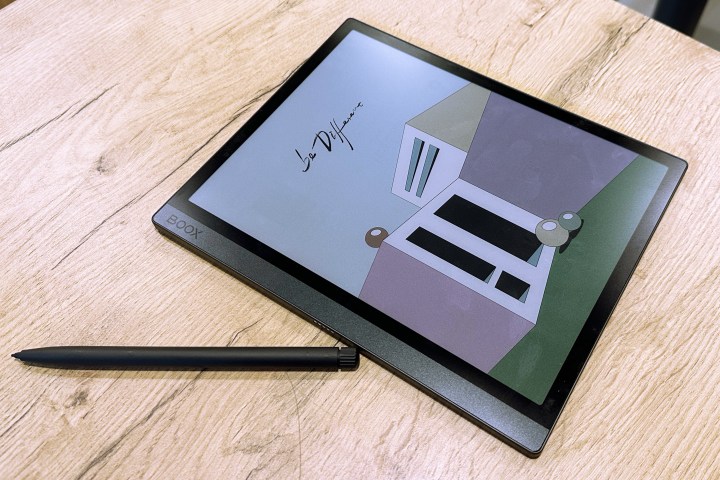
I recently found myself on a reporting assignment in Trivandrum, a beautiful beach town in India’s southernmost state. One sweltering day, as I lay reading some comics on a deckchair, I noticed that a Dutch woman kept taking a peek at my tablet. With hopes of finding a new comics-loving friend from a different world, I asked if she enjoys the work of Mark Millar.
“I am more curious about the screen protector on your tablet. What is it?” she asked in her distinctive accent. I told her that there was no screen protector in place. The display itself looks and feels like paper, with little to no glare. The slate in question was the Onyx Tab Ultra C, which features a Kaleido 3 E Ink display.
Over the next few days, I carried the slate with me, and my new friend spent hours reading books and browsing the web while sipping fresh coconut juice. “I never knew such a device existed. It feels so easy on my eyes, and I can even read it in the dark without fatigue,” she said.
Lessening the impact of screen time
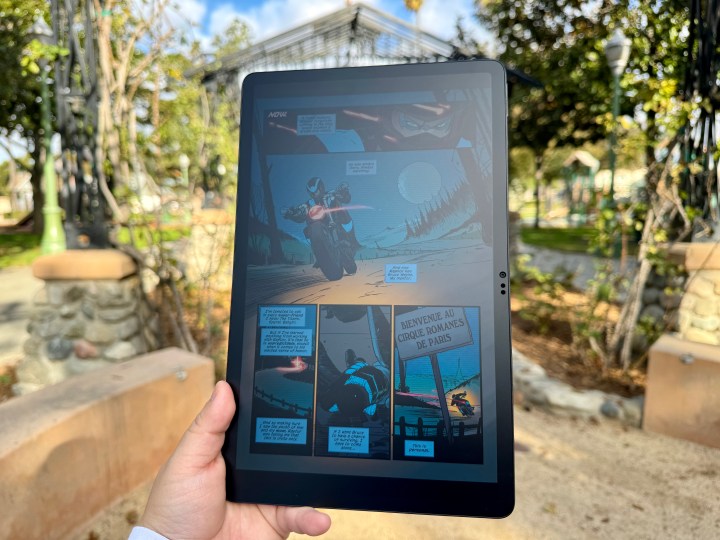
It’s not just average folks living with screen woes. Scientific research has already flagged the risks as average screen time keeps climbing. Unfortunately, we can’t escape screens. Does that mean we can’t save ourselves from digital harm? Yes, we can, to a certain extent, with interventions.
If you scroll TikTok until the wee hours, of course, your sleep cycle is disrupted and the body won’t get the rest it needs to recharge for the next day. Scientifically, it is attributed to the functioning of a hormone called melatonin that affects our circadian cycle.
Interestingly, the interventions themselves have divided the science community. Do blue light glasses really help our eyes? Their efficacy is still debated. And the takea break/look away method isn’t always feasible. But screens are inevitable, both large and small.
What if we fundamentally reimagine the display tech so that it’s easier on our eyes? That’s where names like E Ink, electronic paper, and NXTPAPER come into the picture. As far as NXTPAPER goes, it is a TCL innovation that relies on a Circularly Polarized Luminescence (CPL) screen that emulates how natural light works.
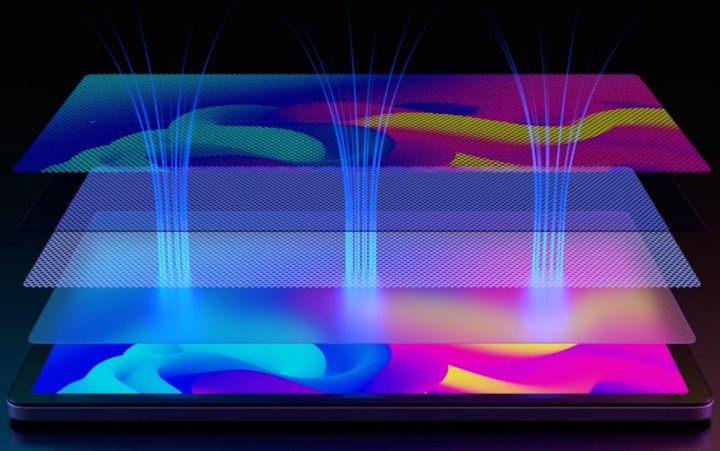
A normal LCD screen emits its own light. Solutions like NXTPAPER don’t. E Ink’s paper-like screens rely on external light reflection, just like how you can see and read a paper book under sunlight.
The latest 3.0 iteration of TCL’s tech is claimed to filter up to 61% of blue light without reducing image quality while offering the experience of reading paper in natural light. TCL’s tech also employs an RGB sensor that automatically adjusts the screen temperature. That’s a crucial addition.
An iPad-centric study that focused on the efficacy of Apple’s Night Shift feature noted that a single intervention doesn’t always work. But when implemented collectively – such as changing the screen temperature and brightness levels – it could yield positive results as far as the impact of short wavelength (blue light) on melatonin secretion is concerned.
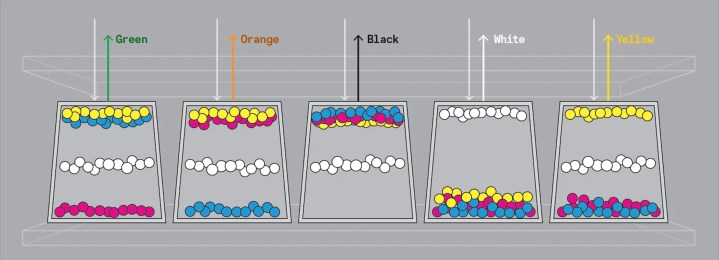
“The updated tech has a range of new features fine-tuned for the senses of sight and touch to promote healthier digital viewing habits,” TCL tells Digital Trends. Parallel to TCL’s work is E Ink, which began its journey back in 1997 at the MIT Media Lab.
E Ink now ships colored versions of its display tech that appear on devices like the Boox Tab Ultra C and HiSense A7 CC smartphone. But there are certain inherent problems with e-ink screens that can make or break the experience for anyone looking to invest in a slate for reading and browsing.
The low refresh rate means watching videos is not the best experience, and even basic reading leaves ghosting artifacts. For example, the most advanced Kaleido 3 tech by E Ink can only produce 4,096 colors, which is barely a fraction compared to the millions of shades a phone throws at your eyes.
The next leap for display tech
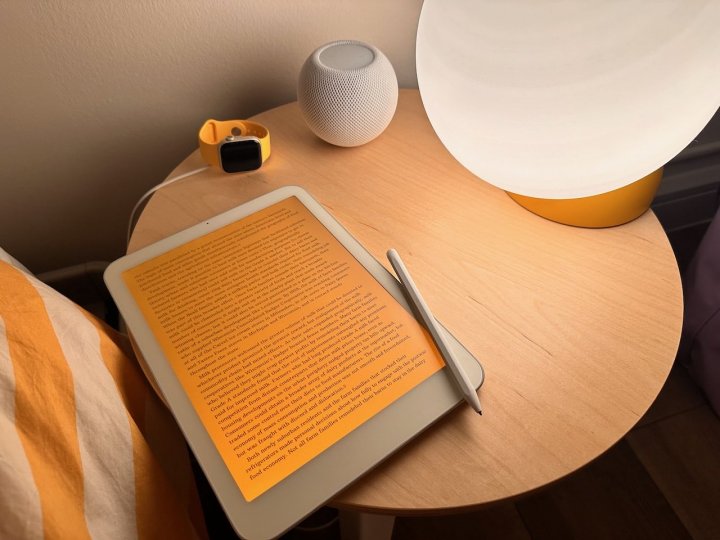
Even though the tech itself is amazing – utilizing a system of ink in tiny microcapsules that move when electric charge is applied – the real experience leaves gaping functional holes. That’s where Daylight Computing is trying to emerge as a game changer.
Daylight says its slate “looks like e-ink, but has the fluidity of an iPad.” Company founder Anjan Katta describes it as a “fast refresh rate, reflective, paper-like” system based on a long-abandoned display tech that employs something called microreflective structures.
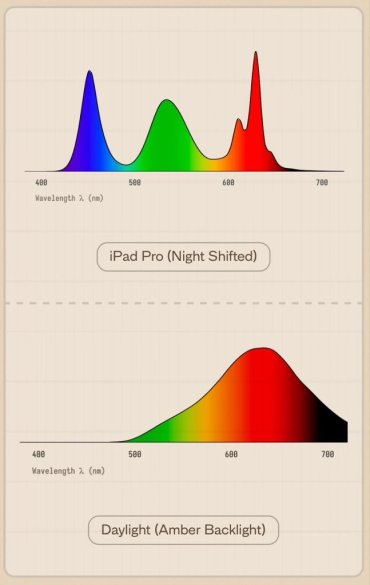
The company promises a respite from laggy scrolling and ghosting, the two biggest pitfalls of the current-gen e-ink and e-paper solutions. “It’s the first one you can use throughout the day. In direct sunlight during the day, and with a pure-amber hardware backlight at night,” claims the upstart.
Daylight has yet to share more details about the tech powering its upcoming tablets (monitors and phone-like devices are also in the future). These tablets rely on a unique amber lighting approach. They look striking, and paired with the company’s performance claims, they could very well shift the landscape.
But for a hardware upstart like Daylight, changing the game comes at a cost. Daylight’s upcoming tablet with amber light hardware carries a price tag of $899. That price fetches a top-tier and far more functional tablet slate from the likes of Apple. Plus, they offer some meaningful, vision-friendly interventions — some of which are highly recommended by medical experts.
This is where companies like SuperUs Systems come into the picture by hoping to address the accessibility challenges with cost reduction and scalability. “Localization of device manufacturing and software development will not only enable a price advantage, but also extend reach,” says the Indian company, which recently inked a deal with E Ink to make a wide range of devices.
A placebo, or preventive caution?
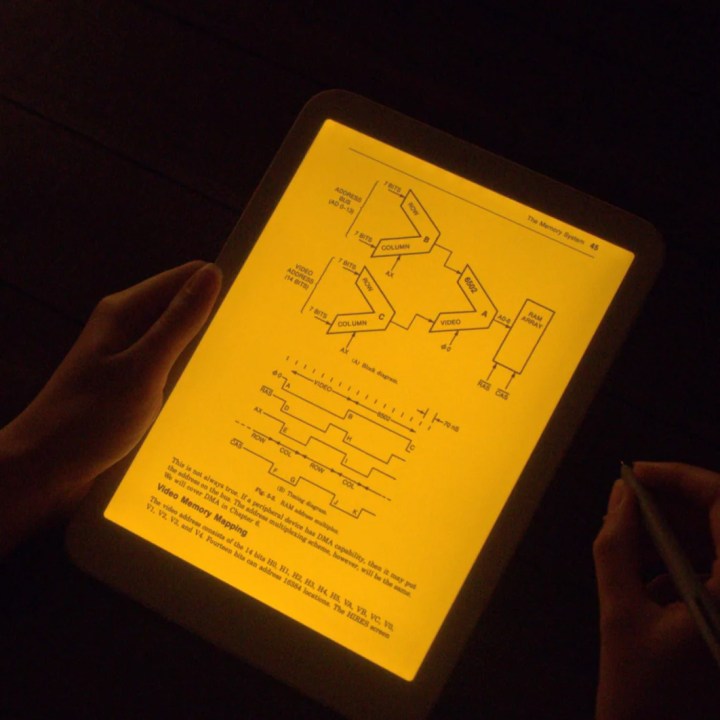
But the question is, do they really help? Harvard research says the retinal cells in human eyes exhibited oxidative stress two to three times slower when exposed to an e-paper display compared to an average LCD-based panel. The test was conducted on cells in a lab situation and not real humans.
Dr. Jennifer Tsai, a Manhattan-based optometrist and TCL brand ambassador, says there is no clarity on the long-term health effects of display-triggered harm to the retina and cellular-level stress. However, the light emitted by an average LCD screen stresses the retinal cells, and with prolonged exposure, it leads to photo-oxidative retinal damage.
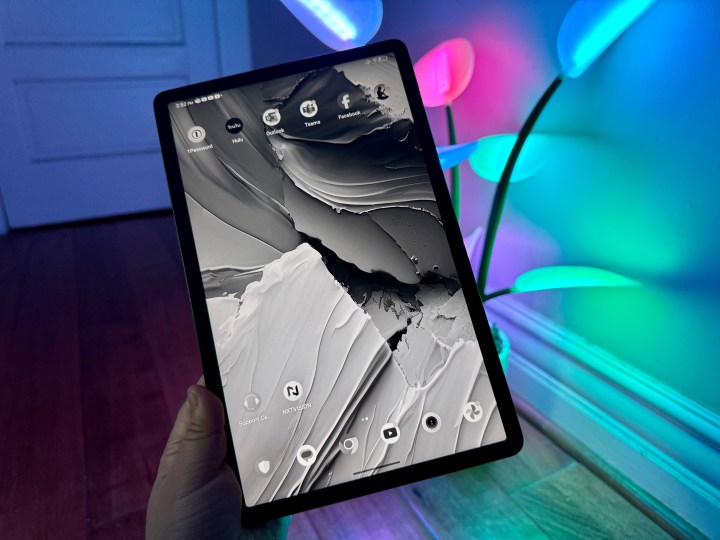
“As of now, there is no known cure for photo-oxidative retinal damage,” she adds. That’s not a particularly bright outlook, but she expresses confidence about certain interventions. “Preventive measures such as reducing exposure to harmful light with better digital technology, wearing blue light-filtering glasses, and consuming a diet rich in antioxidants may help mitigate the risk of damage.”
Adjusting the color temperature can help, but the ideal way forward is changing the spectra of light coming from screens. A Scientific Reports paper says intensity and spectrum of light are critically important markers, and their exposure effect is evident on both young and old users to different extents.
Another study published in the Displays journal, which analyzed the reading behavior of a person based on eye movements, concluded that e-ink panels are closer to real paper and notably better than LCD screens.
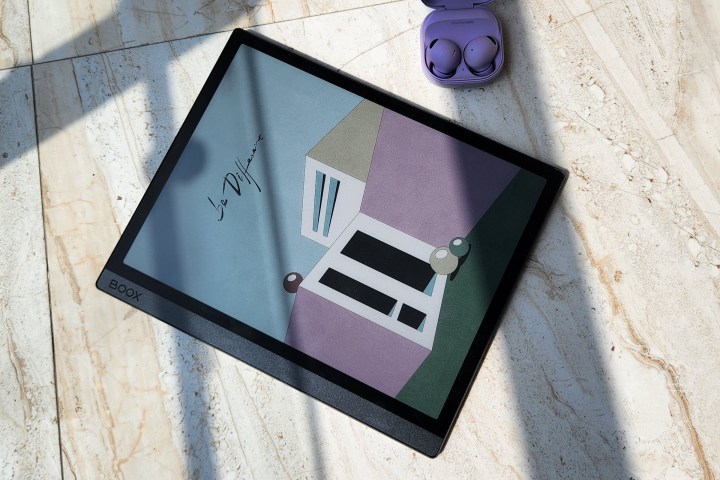
Tests have also demonstrated that E Ink’s ComfortGaze tech can reduce the Blue Light Ratio (BLR) and Blue Light Toxicity Factor (BLTF) by up to 60% and 24%, respectively, when compared to the older front-lit display tech.
But should we worry more about the science or the behavioral side of how we interact with screens? Well, experts are divided here. Ophthalmology specialist Odalys Mendoza notes that the kind of lab experiments described above don’t depict the natural conditions in which human eyes are exposed to blue light.
While she rules out permanent damage to the eyes due to the small amount of blue light emitted by devices around us, she notes that “staring at them for a long time can cause temporary discomfort” that can manifest in the form of dry or teary eyes, blurry vision, and headaches.
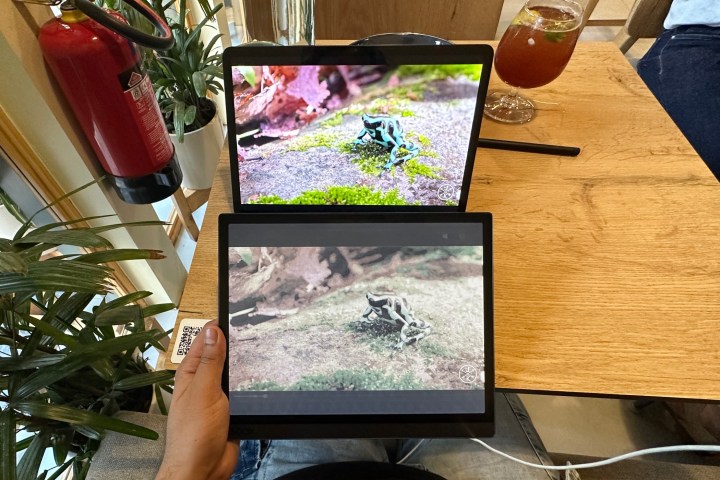
Once again, interventions are pitched. Mendoza recommends taking breaks in accordance with the 20-20-20 rule (every 20 minutes, for 20 seconds, look at an object 20 feet away), using eye lubrication fluid, and reducing the brightness and glare. However, not all eye drops are safe.
The Food and Drug Administration (FDA) has warned consumers against buying over-the-counter lubricating eye drops following cases of vision loss, infection, and even death. Gary D. Novak, a professor at the UC Davis Health Eye Center, suggests one should only pick well-known brands like Bausch and Lomb, Alcon, and Johnson & Johnson to be on the safe side.
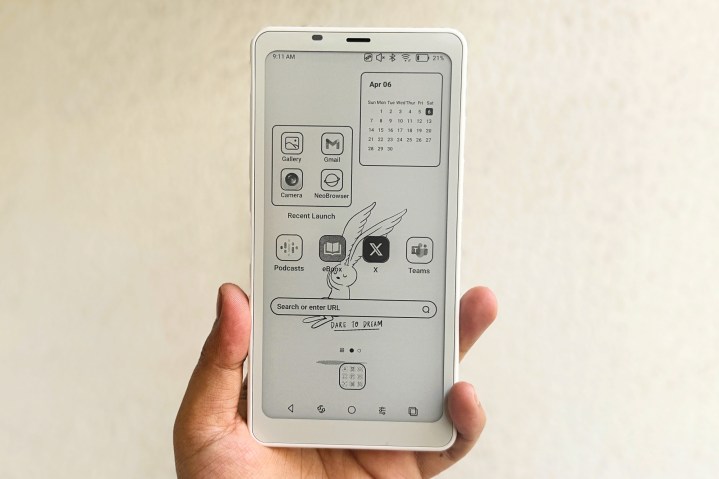
What about situations where the 20-20-20 rule is not feasible? “Regular breaks whenever possible, such as taking a 5-minute break every hour instead,” recommends Dr. Tsai. She also recommends a few other tips:
- Blink regularly to reduce dry eyes and discomfort.
- Keep screens at a further distance of general arm’s length.
- Increase font size.
- Limit screen time, especially before going to bed.
A study published in the Ophthalmology and Therapy journal also suggests a total of four interventions for Digital Eye Strain, which include improved digital ergonomics, taking breaks, reducing daily screen time, and engaging in outdoor recreational activities.
Taking steps in the right direction
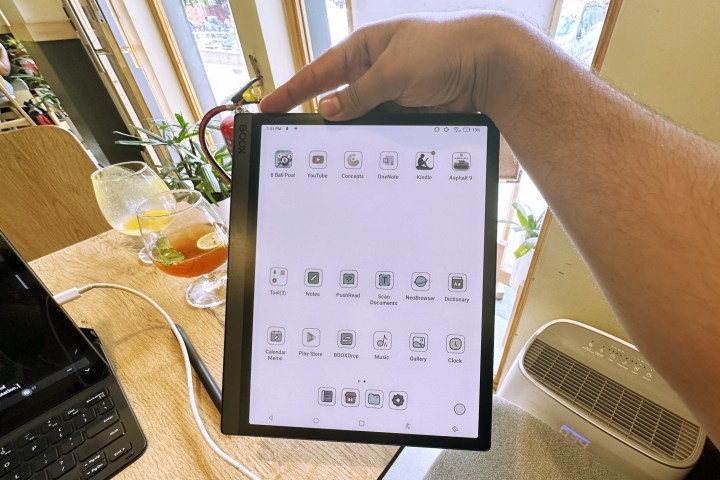
Consumer electronics brands like TCL also lean toward behavioral interventions. The company says its TCL NXTPAPER stack comes with an integrated eye-care assistant that flashes timely reminders and helps users cultivate healthier digital viewing habits.
Over the years, multiple iterations of e-paper and e-ink tech have been created. We have now reached a point where even monochrome e-ink screens can play YouTube videos. I even indulge in chess and Angry Birds on my Onyx Boox Palma, a phone-like e-ink reader that also runs the full Google Play experience – sans the color.
But it’s worth keeping in mind that it’s not just the experience (the good, bad, and ugly sides) of these novel devices that matters. Science is still uncertain about the exact impact of screen exposure. And until clinical research proves it, behavioral changes like healthy screen habits are the way to go forward.



